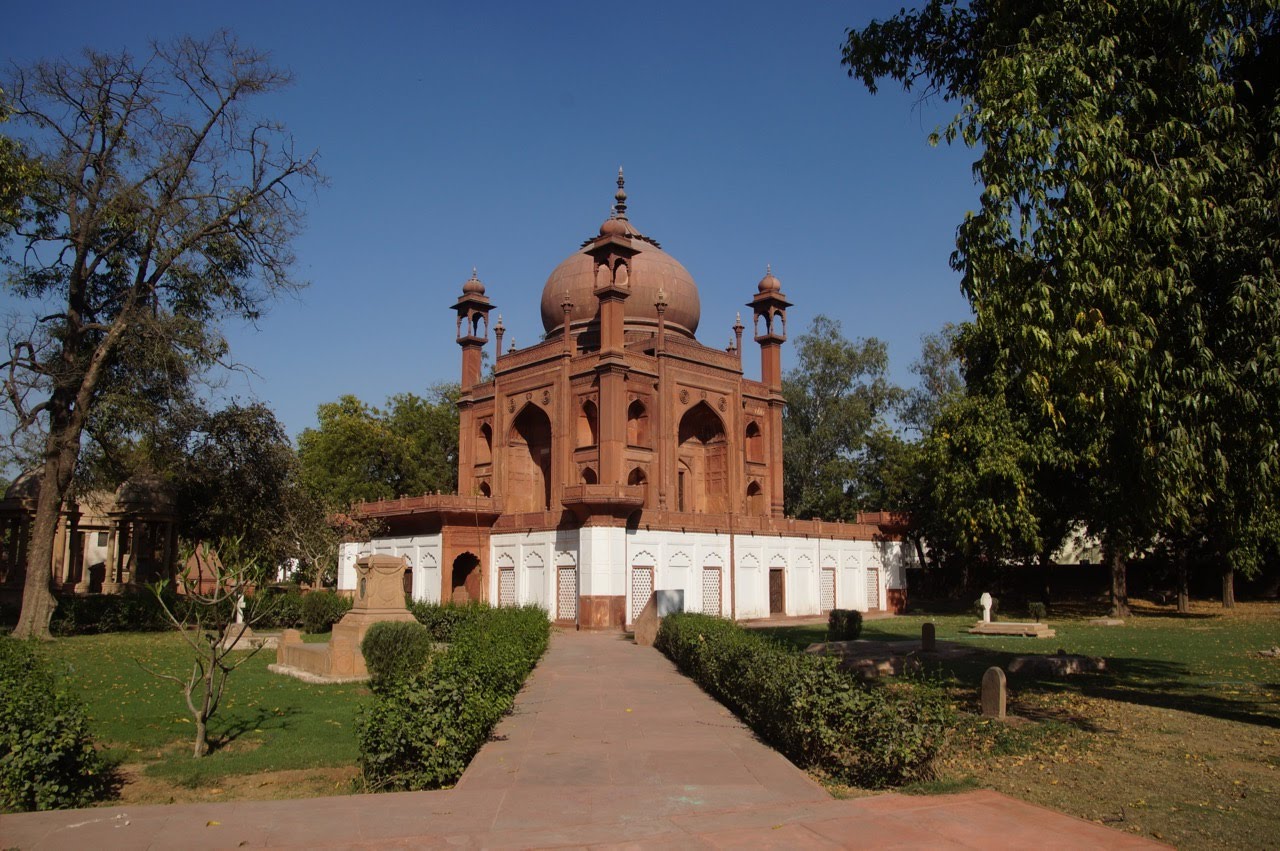The Red Taj: With love, from Anne

The Roman Catholic cemetery, also known as the Red Taj, stands as an heart felt tribute to John Hessing (Photo: Aditya Pathak)
A monument build out of grief and love, a monument dedicated to a lost, beloved spouse. Most would connect this description to the magnificent Taj Mahal in Agra, world’s most famous ode to love built in pure white marble by the Mughal Emperor Shah Jahan in the memory of his wife Mumtaz Mahal.
But little known to most tourists or even denizens of Agra, barely 9 km from the Taj Mahal lies another architectural poem of love. Only this one is not white but red and built by a British woman in the memory of her husband. Its official and better known name is ‘Roman Catholic Cemetery’ but the locals fondly call it the ‘Red Taj’ because of its unmistakable similarities to the original.
“It is the tomb of John Hessing,” says Aditya Pathak, a YouTuber from Delhi. “He was military man, who was born and brought up in Holland, somewhere around 1750s he was stationed at Ceylon (present-day Sri Lanka) for quite some time with the Dutch East India Company. He then decided to go back to Holland and then come back to the subcontinent around the 1760s, later on serving in the army of the Nizam of Hyderabad. He soon decided to change sides and joined the Marathas,” recounts Pathak.
Hessing was stationed in Agra, and eventually passed away while trying to protect the Agra Fort from the British Army in 1803. His wife, Anne Hessing stricken with grief, decided to build his tomb at the oldest Catholic cemetery in North India. Built in the image of Taj Mahal, it is made out of red sandstone. “Local believe that Anne actually wanted it to replace the red stones with white marble,” says Pathak, “but she wasn’t allowed to do so, because then it would have competed with the original Taj Mahal.”
The cemetery that the tomb stands in today, has existed since the 1500s as it was normal at the time for European soldiers to serve in the various different Indian armies, and have families with ethnic Indians, they later came to be known as the ‘White Mughals’.
“There are many graves in the cemetery that out date the tomb,” adds Pathak, “many of them even have, English, Hebrew, Greek, Italian, or even Sanskrit engraved on their tombstones. There are similar sites in other cities as well, notably Delhi and there are several graves of several such individuals who died at a very young age.”
Open to the public the Red Taj is a goldmine for people interested in history and culture of little known but significant monuments. “I love visiting heritage sites and it is even more exciting if it is a lesser known, less crowded but still well managed place,” Pathak tells Media India Group.
“Hessing’s tomb (the Red Taj) was really a memorable experience for me. The architectural feat obviously was a pleasure to watch and admire. Moreover, the greenery around and the calm of a cemetery as well as the pleasant weather, everything just worked well for us. I had researched about the place before visiting it,” recounts Pathak.
For the real history buffs there are several helpful guides and officials always ready to share information about anything related to the Red Taj, giving the tourists an insight into the past of the almost half millennium old cemetery, and the engrossing lives of the people resting there.
“The rest of the complex, besides Hessing’s tomb, is also full of unique tombstones,” says Pathak, “While we were discussing the unique fusion styles of each resting stones, i.e., several tombstones and cenotaphs had a Mughal styled architecture and calligraphy but those actually belonged to Roman Catholic British individuals.”
The lush green surrounding, makes the cemetery look more like an ancient garden, decorated with old Christian and Mughal artifacts. “We played a small game among our history enthusiast friend group,” added Pathak, “by guessing the era/year in which a particular cenotaph was erected by deciphering the architectural style. Although we seldom succeeded because most of these were built in the ‘folly’ style, i.e., made to look older and ancient.”
A talk in the peaceful and historical burial ground can soon lead down the path of interesting conversations about the lives of people lying enshrouded six feet under the ground and the little quotes on the tomb stones trying to sum up people’s entire existence, telling you interesting tales about the lesser known mortals who are nonetheless integral to Indian history.









